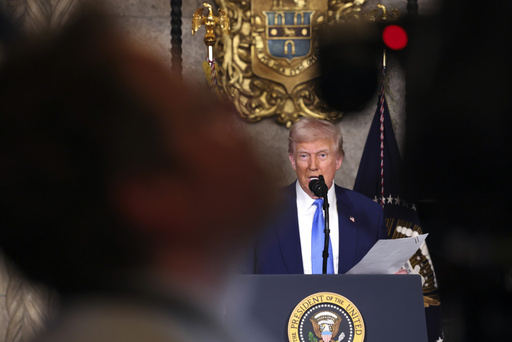
On Tuesday, President Donald Trump signed an executive order focused on decreasing the expenses associated with in vitro fertilization (IVF), a procedure designed to assist individuals dealing with infertility in starting their families.
The order articulates, “Americans need dependable access to IVF and more affordable treatment alternatives, as the cost per cycle can vary from $12,000 to $25,000.” It emphasizes that enhancing support, increasing awareness, and making fertility treatments more affordable can enable families to pursue parenthood with optimism and assurance.
The directive tasks the president’s assistant for domestic policy with preparing a list of recommendations within 90 days on how to safeguard IVF access and effectively lower out-of-pocket and health plan expenses for IVF treatments.
The topic of IVF gained traction during the 2024 presidential race, particularly after Alabama enacted protective measures for IVF providers following a state Supreme Court decision that classified frozen embryos as children under state law.
Trump publicly declared his strong support for the accessibility of IVF, and a poll conducted by the AP-NORC Center for Public Affairs Research in June indicated that approximately 60% of U.S. adults favor maintaining IVF access, with 26% remaining neutral and around 10% opposing it.
According to a report from the U.S. Centers for Disease Control and Prevention, assisted reproductive technology, which includes IVF, accounted for 2% of all infants born in the country in 2018.
So, what is IVF? This medical procedure serves as a potential solution for women who face challenges in becoming pregnant and is usually pursued after less costly fertility treatments have proven unsuccessful.
IVF entails retrieving a woman’s eggs and merging them with sperm in a laboratory setting to produce a fertilized embryo, which is subsequently implanted in the uterus with the hope of achieving pregnancy. The process occurs in cycles, and multiple cycles may be necessary. Additionally, IVF can involve using either the couple’s genetic material or donors’.
When it comes to insurance, coverage for IVF and associated fertility treatments is inconsistent and varies depending on the insurer. Employers, particularly larger ones, are increasingly offering this coverage to attract and retain talent, extending benefits even to those without an infertility diagnosis, including LGBTQ+ couples and single women.
On the other hand, government-funded programs like Medicaid generally offer limited coverage for fertility treatment, and such benefits are less common among smaller employers. Critics argue that the existing lack of comprehensive coverage leads to inequity, as only those who can afford the substantial out-of-pocket expenses can access these procedures.
The history of IVF is notable, with the first baby conceived through the procedure born in England in 1978, while the first in the U.S. arrived in 1981 in Norfolk, Virginia, with the birth of Elizabeth Carr.
Judith Carr, Elizabeth’s mother, had faced three problematic pregnancies that necessitated the removal of her fallopian tubes. She and her husband sought care from Howard and Georgeanna Jones, who had established a fertility clinic at Eastern Virginia Medical School. Despite public resistance and a large turnout in a public hearing opposing the clinic, it opened in 1980, paving the way for additional centers to emerge in states like California, Tennessee, and Texas. By 1988, there were at least 169 IVF centers operating across 41 states.
While the utilization of IVF grew over the years, sentiments opposing it persisted within the American anti-abortion movement. Margaret Marsh, a history professor at Rutgers University, indicated a complicated relationship where abortion opponents had somewhat accepted the technology for infertility treatment. However, after the overturning of Roe v. Wade in 2022, opposition to IVF has gained traction within certain factions of the movement.
The procedure to create embryos typically involves using hormones to induce ovulation so that multiple eggs are produced, which are then retrieved with a needle from the ovaries. Eggs can either be fertilized by adding sperm directly or by injecting a sperm cell into each egg. After fertilization, the egg is cultured for approximately five to six days until it reaches the blastocyst stage before being either implanted or stored for future use. Dr. Jason Griffith, a reproductive endocrinologist in Houston, noted the growth in the number of cells within the embryo during cultivation.
Embryos can be preserved for subsequent pregnancies, and most survive the thawing process effectively. The freezing technique involves replacing water in the cells with a protective fluid and utilizing rapid flash-freezing with liquid nitrogen. These embryos are stored in tanks at hospital laboratories or reproductive medicine centers, with further long-term storage options available through contracted facilities. These embryos can be safely preserved for over a decade, with strict monitoring of conditions to ensure their viability.
Overall, the executive order by President Trump marks a significant step towards making IVF more accessible and affordable, especially for the growing number of individuals and couples seeking help in their family-building journeys.

